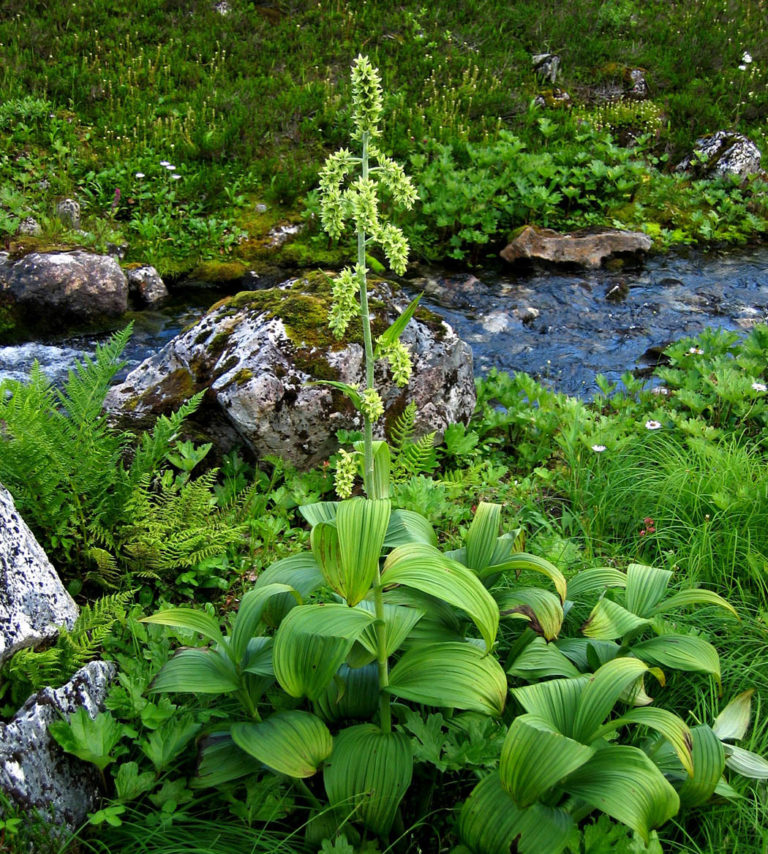pun’hwe’num’ – is the term we use in Stz’uminus for the month of May. This is named for speenhw “blue camas” [Camassia leichtlinii (Baker) S. Wats. and/or C. quamash (Pursh) Green. Some Elders say tum’peenhw – tum’ – time of camas, or tum’pe’un’hw – time of getting camus. This was an important starch food for our people. It was gathered from island bluffs and high fields and baked, steamed or roasted. It has a sweet taste similar to marshmallows. There were strict rules about who could harvest where and when. And our ladies tended the camas plots to make sure that they thrived. The dried camas would be put away in the winter box and used in soups during the winter time, along with wild onions, and wapato.
Roxanne Seymour from shtsum’inus on camas
Featured Plant
qwunulhp | Indian Hellebore
This is a perennial plant that grows from short, stout, rhizomes (underground stems). The leaves are broad, oblong to elliptic, and with prominent ribs running their length. The pale-green flowers appear in numerous, terminal clusters with drooping tassels. The fruits are small capsules that contain papery seeds. This species occurs in bet areas such as thickets, meadows, bogs and swamps, and usually open forests. It may be found from low to subalpine elevations throughout the coast.
